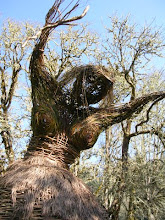I walked into Borders just before they closed to purchase some shelving, and of course I had a look at the remaining books. It was sad, sad, sad to see such a bright and capacious bookstore closing, and little of interest was left on the shelves. But by some kind of serendipity, there was one copy left of William Woys Weaver’s book, Culinary Ephemera: An Illustrated History.
To be honest, I hadn’t heard of it even though it was published in 2010. Naturally I swept it off the shelf (the word “ephemera” is magical to me, of course.) With a pause at the cash register it became mine, and I’m very pleased with it.
This is not a price guide, and unlike other books on cooking materials it is not primarily about cookbooks and booklets. In fact, it leaves cookbooks out altogether and instead focuses on what is truly ephemera – booklets to be sure, but also almanacs, menus, handbills, labels, sheet music, trade cards – even postcards, match book covers, valentines and more. This brought categories to my attention that I hadn’t even thought of.
This Kilpatrick's Bread booklet from 1922 attempts to glamorize bread with recipes for sandwiches, various toast treatments, breaded meats, and "mock duck."
The best part of the book, however, is the way in which Weaver uses the ephemera to describe the attitudes, prejudices, and social and economic values and changes in American culture over the decades. And he not only includes cooking, but just about anything relating to food, culinary advertising, and kitchen appliances and processes.
This billhead is from True & Blandchard: Hardware, Tinware, Stoves, Cuttlery and Notions (Newport, Vermont) and is dated 1894.
This billhead is from True & Blandchard: Hardware, Tinware, Stoves, Cuttlery and Notions (Newport, Vermont) and is dated 1894.
The above cancelled checks are from (1) the O.A. Harlan & Co. Packer of Dried Fruits (San Jose CA) dated 1922 in the amount of 22.00; and John Batto & Sons: Wholesale Produce Shippers (San Francisco, CA) dated 1907 in the amount of $100.00. Both are illustrated with images of company facilities.
Much cooking ephemera is bright, colorful, and appealing, since most of it is advertising that attempts to draw attention to itself and the products it promotes. Canned asparagus could, in fact, only look appealing on paper! White or not.
Cooking ephmera has long been a prized collectible for its visual and graphic appeal, but this book lays out some more profound reasons for collecting these oddments of everyday life. Even if your only interest is in the history of American food culture, it is well worth reading. And after looking at the lively images reproduced in the book, it is difficult not to add culinary ephemera to your collecting interests.
A label for Mountain Brand Cherries, Salem Oregon. The "modern" maraschino cherry was, in fact, developed at Oregon State Agricultural College (now Oregon State University) in nearby Corvallis. In a bid against imported Italian cherries - and with an abundant cherry production in need of a market - one Prof. Ernest Wiegand worked for several years to perfect the product. A building on the OSU campus bears the name Weigand hall, and they are so proud of this bit of history that there is a class offered (Maraschino Cherry 102) which examines the "historical, technological and scientific aspects of maraschino cherry production." Well....yes.
The only thing that saves me is being an ephemera dealer – I can take pleasure in enhancing the collections of others rather than trying to archive and maintain a collection of my own.

















